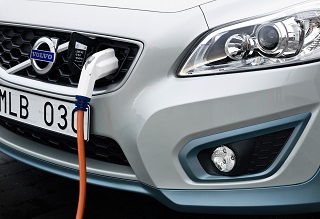A Contributed Post: Volvo Making Good on Their Electrification Strategy
Volvo is now jumping into the electric car market. The automaker recently unveiled two concept vehicles that were designed and built to ultimately support the company’s first all-electric vehicles to go into production. Both of vehicles will utilize Compact Modular Architecture platforms, a technology commonly used for small vehicles.
That’s a complement to the Scalable Product Architecture currently used for larger cars. Within a few years, Volvo hopes to base all of their production models on these two platforms.
As for the mechanical components, when the automaker moves into actual manufacturing and production, they plan to utilize as many of the same Volvo parts from the gas-powered counterparts as they can. That means owners can rest assured the replacement Volvo parts for these next-generation automobiles won’t cost an arm and a leg. With the same robust distribution and inventory Volvo has built over the decades, owners will be able to easily find OEM Volvo parts when they need them.
All-Electric Cars, Same Quality Craftsmanship
Volvo is looking to introduce a new generation of compact cars with electric technology. Designed with the same high-quality Volvo parts, craftsmanship, and attention to detail, the company hopes to increase their “green car” sales as much as 20% by the year 2020.
While the first of the vehicles – dubbed the 40 series models – and its special Volvo parts and software aren’t due for production until sometime next year, Volvo wanted to appease interested buyers and the Swedish brand’s enthusiasts by previewing the two new concept cars.
These concept vehicles included a sedan that was promoted as the new and improved Volvo S40, and a crossover SUV promoted as the new XC40. The new line of next-generation compact cars will also include a replacement for the V40 hatchback, but only offered in the European market.
Electric Cars Part of Strategic Repositioning
Volvo’s strategy with the electric cars is to make an operational and financial transformation over the next few years. The company hopes to implement a revitalization plan that will help reposition the Swedish automaker with its global competitors.
The new lineup will include a couple engine powertrain variants: an electric battery-powered version as well as a Twin Engine plug-in hybrid. This green technology in Volvo’s next-generation engine parts aligns with the automaker’s commitment to electrify its entire new lineup of small cars and SUVs. The goal is to sell approximately a million electric automobiles globally by the year 2025.
It’s All In the Details
Volvo’s new cars will not only have impressive Scandinavian exterior and interior body designs and electric powertrain options, but they’ll also be packed with a range of innovative technologies and connectivity services. Known for safety and durability, so it makes sense Volvo will also include the world’s most advanced car safety parts.
The gas-powered compact Volvos will come equipped with a three-cylinder engine and a seven-speed dual-clutch automatic transmission. As for the engine parts, they are said to be designed similar to Volvo’s XC and S90, adding turbo and supercharger to improve both horsepower output and fuel efficiency.
The PHEV version (aka plug-in hybrid) of Volvo’s XC90 SUV – launched in the US last summer – will be powered by Volvo’s 2.0 liter supercharger and turbocharged Drive E engine. This will be combined with a rear axle electric motor, making it one of the world’s first seven-passenger plug-in hybrid electric SUVs.
You may have recalled Volvo’s “global electrification strategy” discussed last year. Their vision was to create plug-in versions of all of their SUVs, wagons and sedans, using as many of the same Volvo parts as possible such as chassis, suspension, brakes and more. Their goal is to take the electric car market to another level and help reintroduce the brand. Drivers eager to reduce their carbon footprint and Volvo enthusiasts shouldn’t get their hopes up just yet because the new line of compacts, hybrids, and plug-ins aren’t slated to hit the showroom floors until sometime in 2019.

